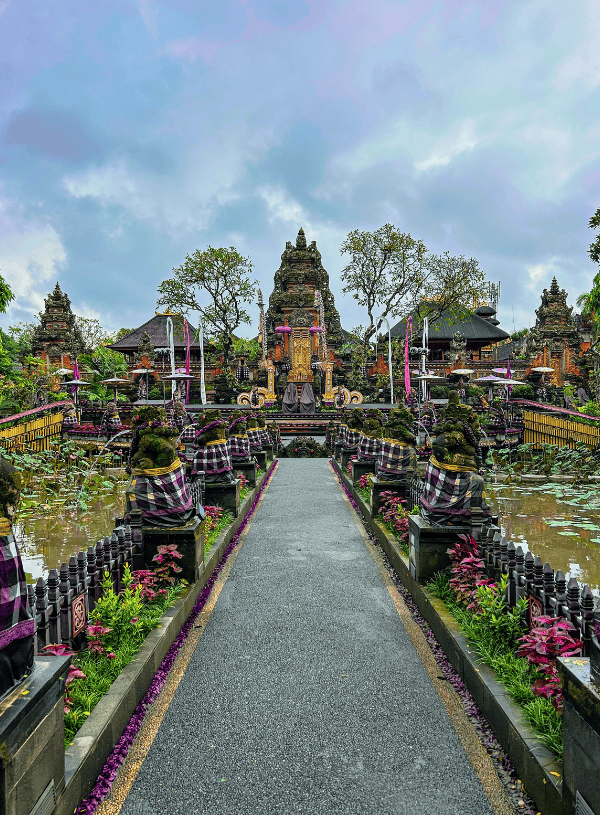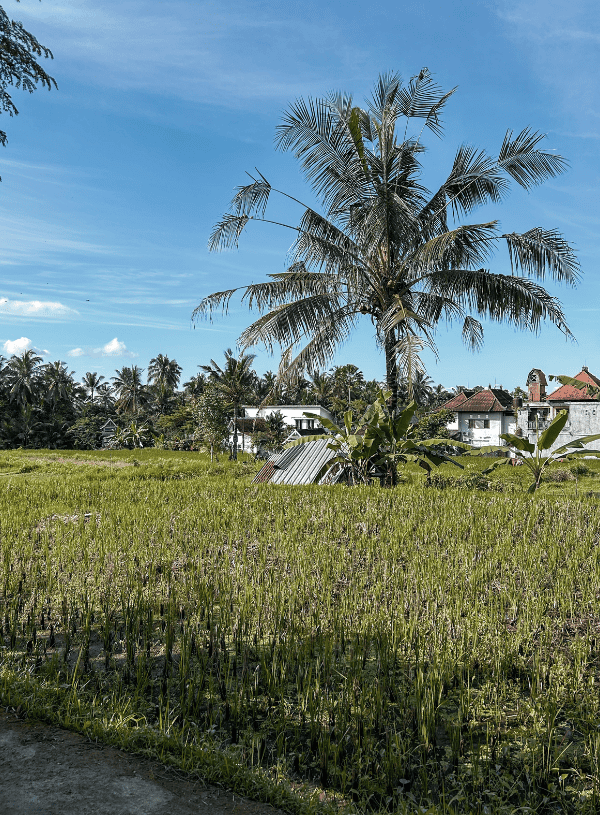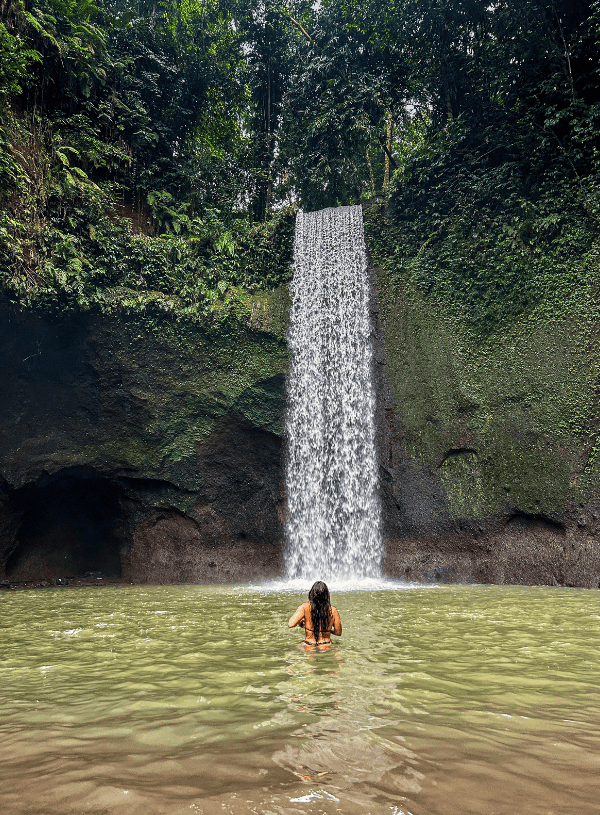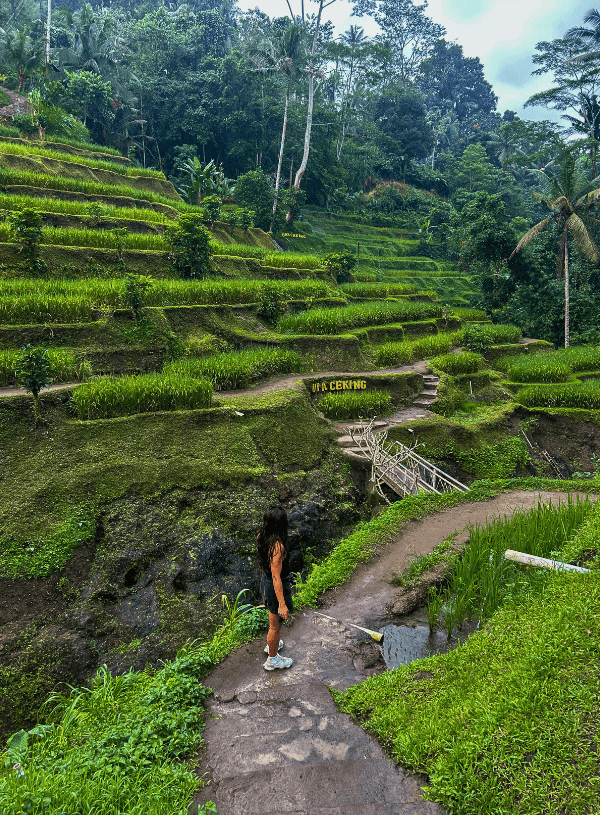Exploring Gunung Kawi Sebatu Temple: Bali’s Enchanting Sacred Site You Don’t Expect
Last Updated on July 14, 2025
If you’re looking to explore more hidden and peaceful sacred sites, Gunung Kawi Sebatu Temple in Bali will definitely enchant you (not to be confused with Gunung Kawi Temple in Tampaksiring).
It was suggested to me by the same guide who led me through my Melukat purification ceremony at Pura Mengening. So, right after visiting the Tegallalang rice terraces, I changed into more temple-appropriate clothes, hopped on a Grab bike, and headed towards Pura Gunung Kawi Sebatu.
Let me tell you… I wasn’t ready for what awaited me. The beauty and sacred atmosphere of this place hit me even before I stepped inside — just riding on the back of the scooter as the temple revealed itself was enough to leave me surprised.
It’s probably one of the most beautiful temples I’ve seen so far in Bali. And if you’re curious to discover its hidden corners and plan your visit, I’ll share everything you need to know in this post.
This article may contain affiliate links. This means that if you purchase through one of the links, I may be paid a small commission at no extra cost to you. Thank you for supporting the blog and allowing me to keep sharing meaningful travel experiences with you.
Don’t have time now?📌 Save it for later!
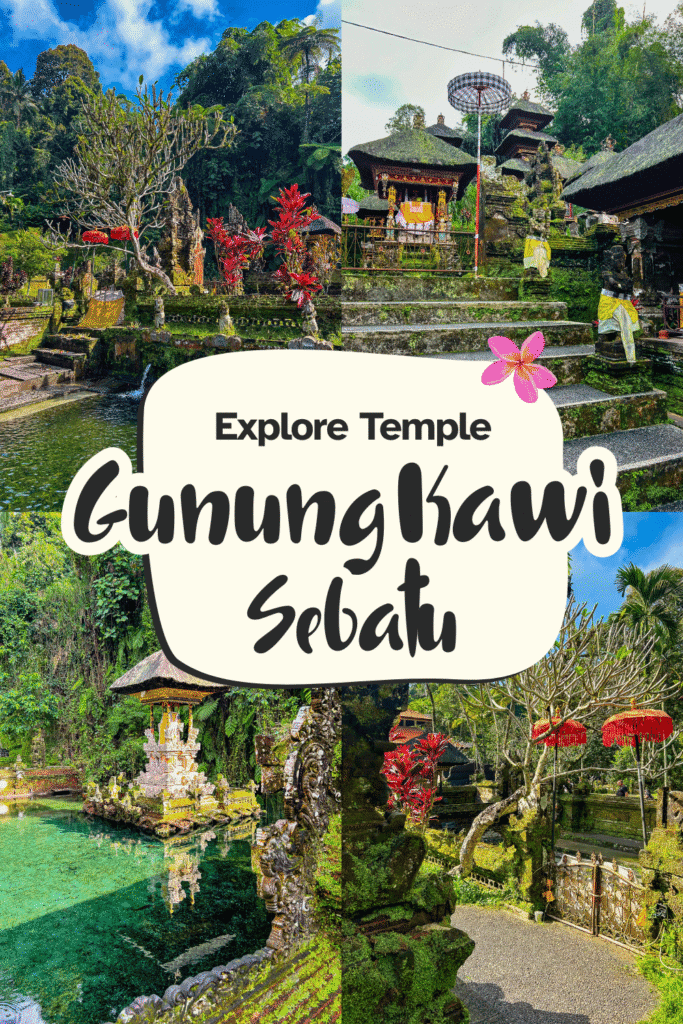
First Impressions: Why It Surprised Me
I honestly believe one of the reasons why this hidden temple surprised me so much was that… I wasn’t expecting anything at all.
The plan for that morning was simple: visit the Tegallalang rice terraces. But then, I suddenly remembered my guide’s suggestion to check out Pura Gunung Kawi Sebatu. Randomly, I packed a pair of longer trousers — just in case — and told myself, let’s see what happens.
That’s what I love about slow and solo travel: you can change plans on a whim and follow your gut feeling.
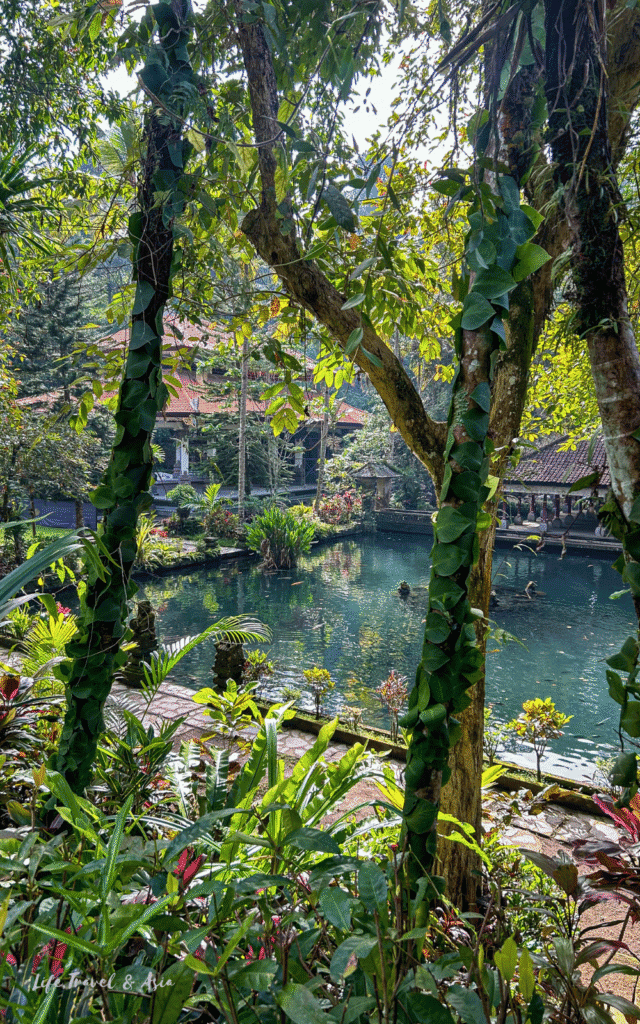
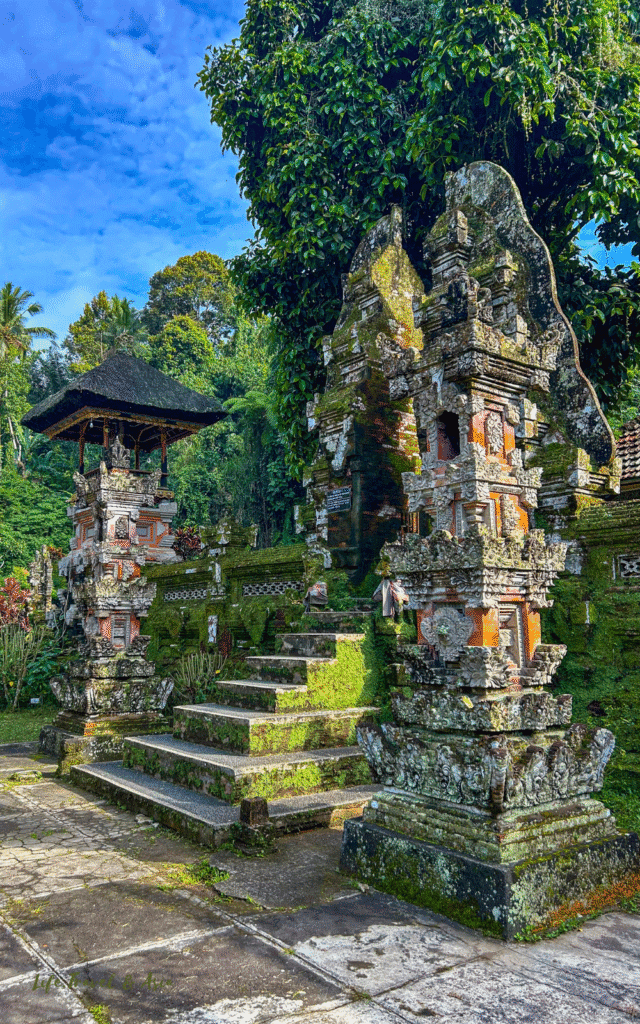
After just a 15-minute ride, I arrived in front of this tiny yet enchanting temple, glowing under the soft morning light of 9 am. The crystal-clear water pools and the tropical gardens (which I’m obsessed with) were already enough to make me whisper wow from the backseat of my Grab bike.
There was no one around, and luckily, I had picked one of those rare sunny mornings here in Ubud. I bought my ticket and headed towards the temple. Before actually stepping in, on your left, a charming koi fish pond reveals itself through the tree branches, followed by an airy open space leading to the main candi bentar gate.
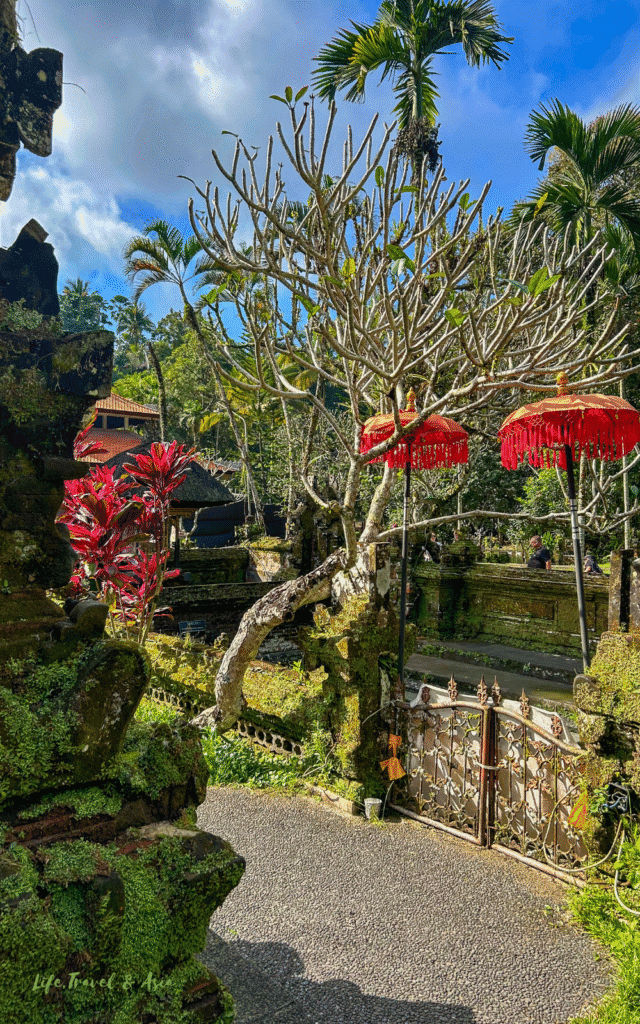
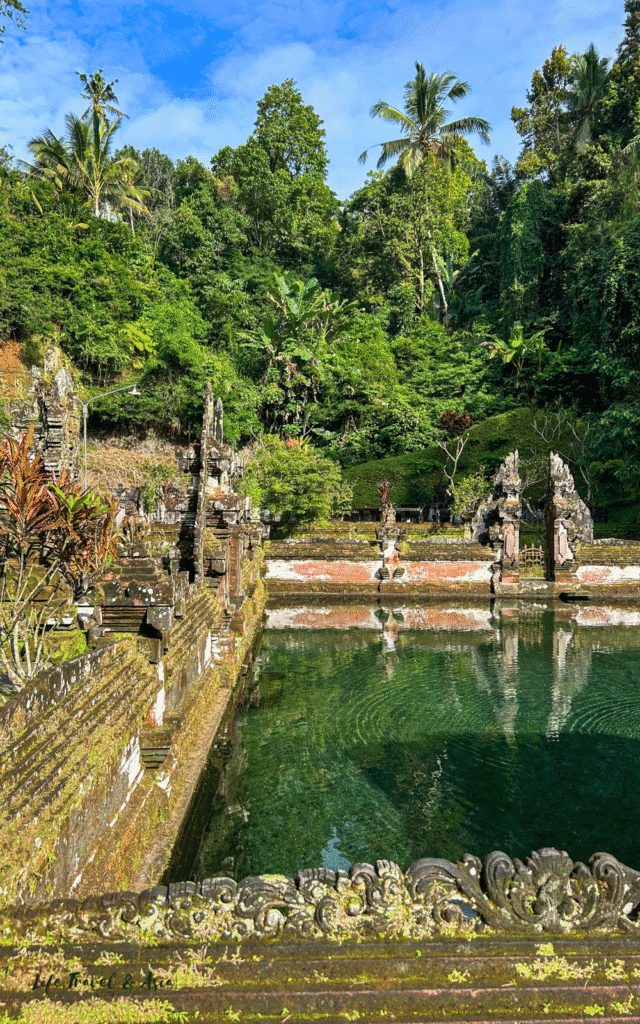
What truly stayed with me was the mix of the sacred atmosphere and the natural and architectural beauty of the place. When I arrived, it was silent — only a few young Balinese women making offerings and lighting incense in front of the altars.
The temple is tucked away in Sebatu village, surrounded by jungle, and around me, there was no sound at all, except for the chirping of birds.
Exploring The Temple Grounds
As I mentioned, the temple isn’t huge, but there was something about it that made me want to explore every corner. I wandered around for almost an hour, unable to stop taking photos, to the point where I even started feeling a bit awkward under the curious eyes of the custodian watching me circle the same spots over and over again.
The temple follows the classic Hindu Balinese structure, divided into three courtyards that symbolise the three realms of existence: the outer world, the middle world, and the innermost, most sacred area.
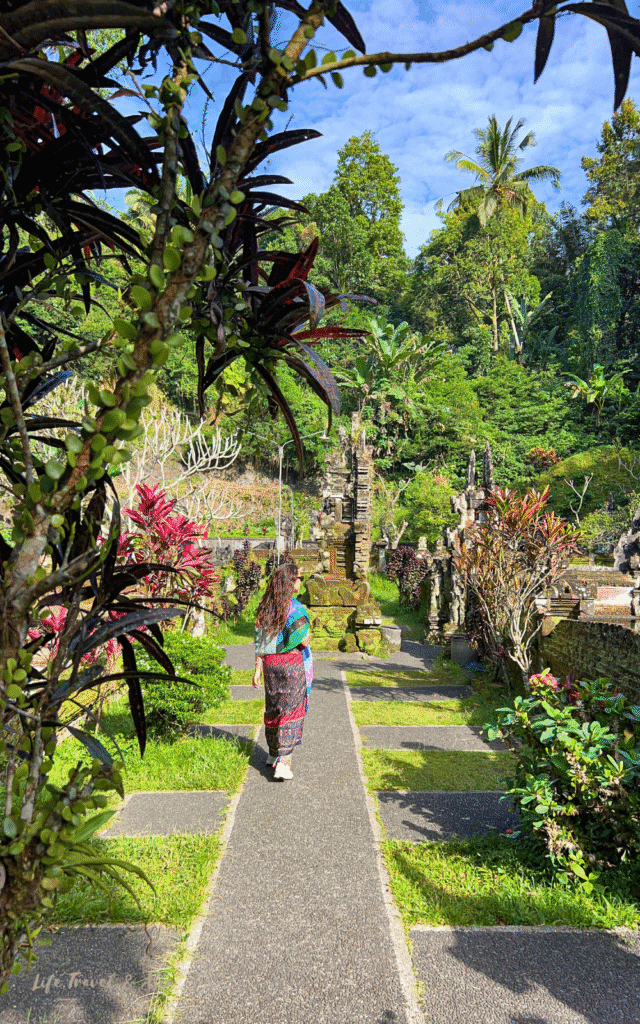
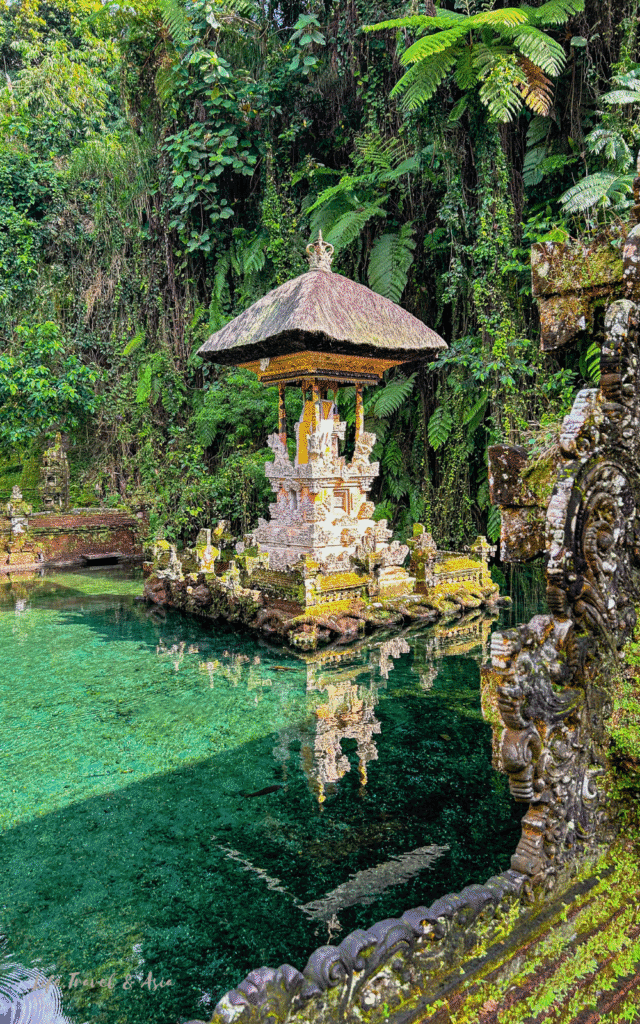
On the left side, you’ll find a lush tropical garden covered in vivid tropical plants and bright flowers, with views over the crystal-clear pools where the Melukat purification ritual is often performed.
A bit further down, there’s a beautiful pond with a small meru-style shrine floating at its centre (here I also spotted the biggest lizard I’ve ever seen in my life).
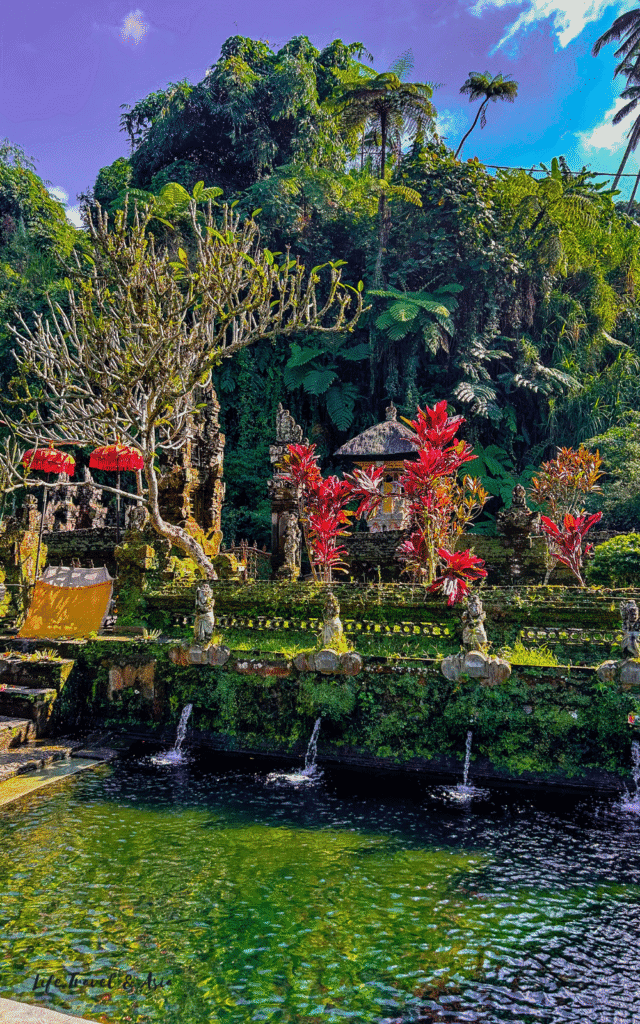
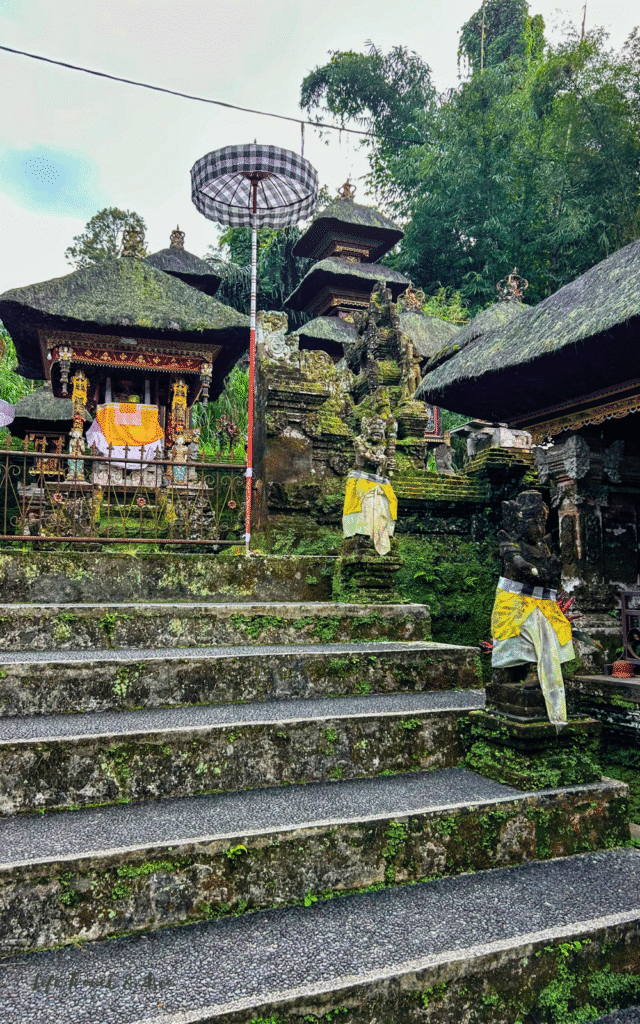
To the right, multiple meru shrines rise, surrounded by colourful canang sari offerings laid neatly in front of them.
And right at the heart of the temple lies the most sacred area, the jeroan — home to the main altar and several open pavilions. While this part is closed off by a simple gate, you can still easily admire its details from the outside.
History of Gunung Kawi Sebatu Temple
Like many sacred sites in Bali, Gunung Kawi Sebatu comes with its share of fascinating legends. One of the most popular stories speaks of Kebo Iwa, a mythical giant said to have carved the nearby cliffs with his bare hands.
The temple itself dates back to the 11th century, built as a sanctuary surrounded by jungle and natural springs. Another story is that of Maharsi Markandeya, a priest who stopped here during his long journey centuries ago.
Tired and in search of relief for his followers, he prayed to the gods, and right there, fresh, sacred water is said to have sprung from the earth. That water still flows through the temple today, making this place deeply tied to purification and healing.
Now that you know what makes Gunung Kawi Sebatu Temple so special, let me guide you through planning your visit with all the helpful details.
And if you enjoy discovering hidden spots, travel tips, and personal stories from my life in Bali and Asia, don’t forget to sign up for the newsletter below. It’s where I share the real, unfiltered side of traveling and living here.
Join the Journey!
Planning Your Visit
How To Get There
Pura Gunung Kawi Sebatu is located about 45-50 minutes from Ubud, in the small village of Sebatu. To get there, you can book a Grab bike from downtown Ubud or a car if you prefer.
But honestly, nothing compares to the feeling of sitting on the backseat of a Grab bike, watching the scenery change as you leave the busy streets of Ubud behind. Soon enough, the road takes you past rice terraces, bumpy stretches of pavement, and quiet villages where a simpler daily life unfolds.
If one hour on a bike sounds too much, you can always plan a stop along the way, like visiting the Tegallalang Rice Terraces. Expect to pay around 50-60K IDR for the bike ride and 80-90K for the car. And if you want to explore more of the area — I’ll mention a few spots below — don’t hesitate to ask your driver to wait for you and help you reach each location.
Other Practical Information: Entrance Fee, Dress Code & Best Time to Visit
The entrance fee for Gunung Kawi Sebatu temple is 50K ($3), and they will provide you with a sarong. It’s usually better to dress modestly, covering legs and shoulders, even if they didn’t seem particularly strict at the entrance.
The best time to visit is in the morning, around 9 or 10 am, when the morning light is at its best. I would also add “during the dry season from April to September”, but Bali’s weather is acting weird right now, so I’m not even sure we still have a proper dry and rainy season lol.
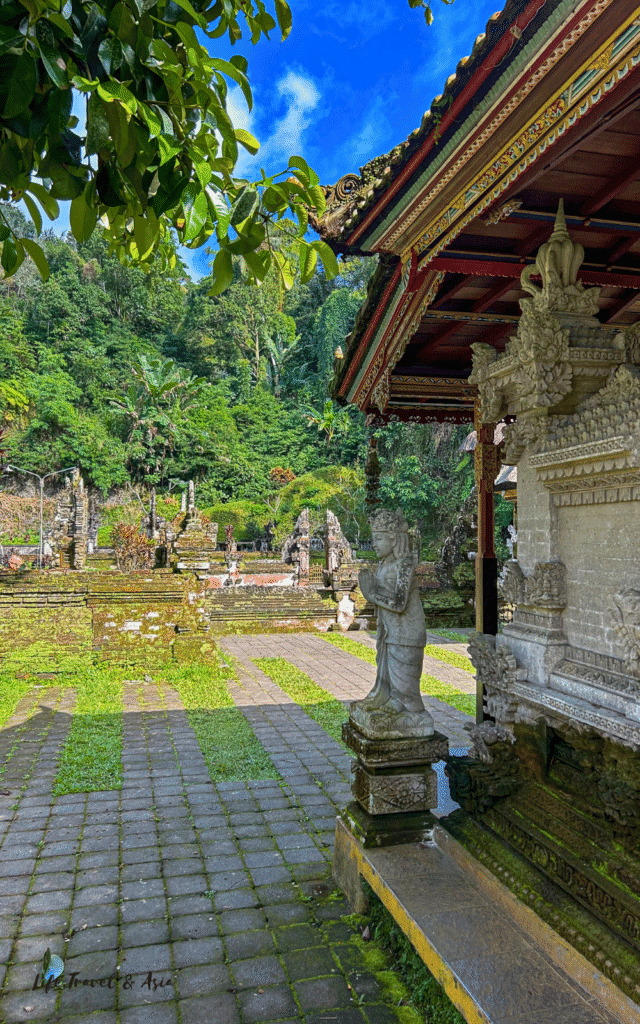
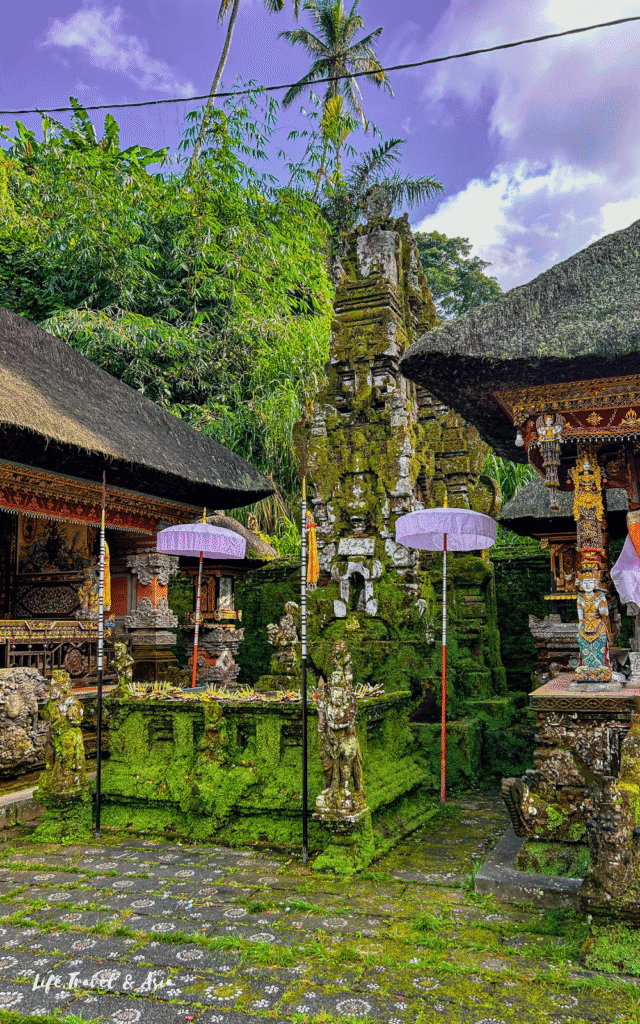
You don’t have to worry too much about crowds here, the temple is not part of most Ubud itineraries anyway. That’s why I suggest doing the rice terraces first (which are, on the contrary, very touristy) and then coming here after.
I highly suggest taking your time to explore the temple and truly discover every corner. The temple grounds are small and you could easily be done in 20 minutes, but this way you’d miss so many little details.
A local practicing the purification ritual or a young lady lighting an incense stick in front of you. Taking your time and feeling the spirituality in the air is the best way to explore this sacred site.
Popular Gunung Kawi Sebatu Tours
Here are some tours I highly recommend if you want to benefit from the knowledge of a local guide while visiting the temple and make the most of your time in the area, especially if you’re short on time and don’t want to deal with transportation.
These tours include Gunung Kawi Sebatu as well as other Ubud and Bali highlights.
Melukat Ceremony and Temple Tour: For those who, after seeing the beauty of this temple, wish to experience a meaningful Melukat ceremony in a more private setting, this is a top-rated option. You’ll be dressed in traditional attire and bathe in the crystal-clear pools of the temple, surrounded by magical tropical gardens
Sacred Water Temple Ritual and Balinese Healing: If you’re up for a full day of healing and relaxation, this tour is honestly tempting, combining a visit to Gunung Kawi Sebatu with a purification ceremony. Once you’re done with the ritual, you’ll head to a 5-star spa for three hours of pure relaxation and unwinding.
Why Pura Gunung Kawi Sebatu Should Be on Your Ubud Itinerary
You should add this temple to your itinerary if you’re looking for a sacred site that truly feels like it’s been opened just for you, where you can walk around with only the sound of the jungle and flowing water surrounding you. And don’t be fooled by its small size… It’s probably the most enchanting temple I’ve visited so far.
This peaceful atmosphere also makes it ideal for practicing the Melukat ritual. During my visit, a Balinese family arrived just as I was leaving to perform the ritual with their guide, and they had the temple entirely to themselves.
If you’re considering experiencing the Melukat here, this top-rated experience is the perfect way to do it in a meaningful and private setting.
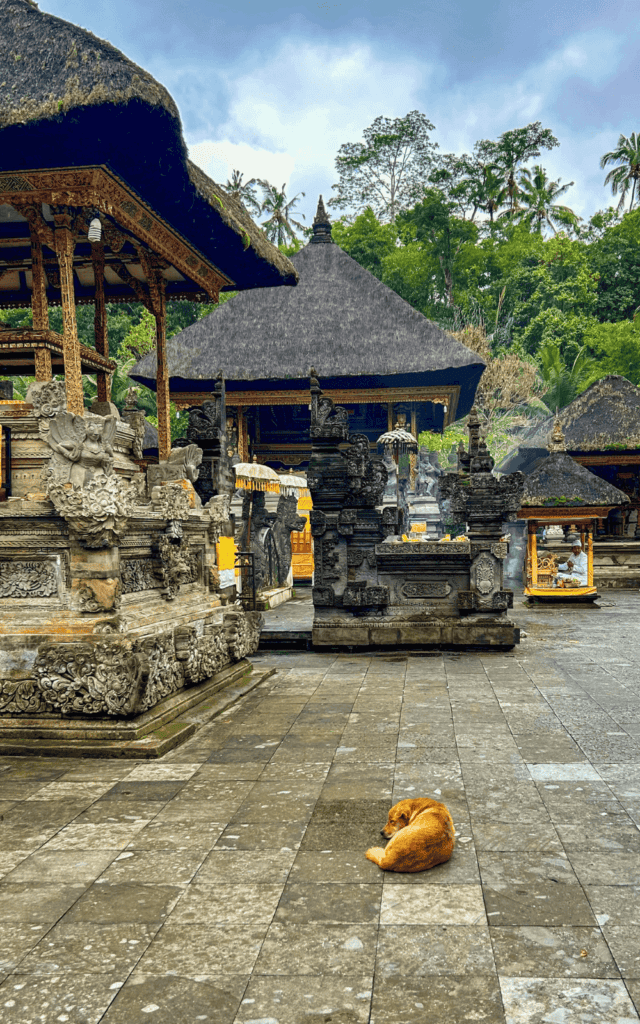
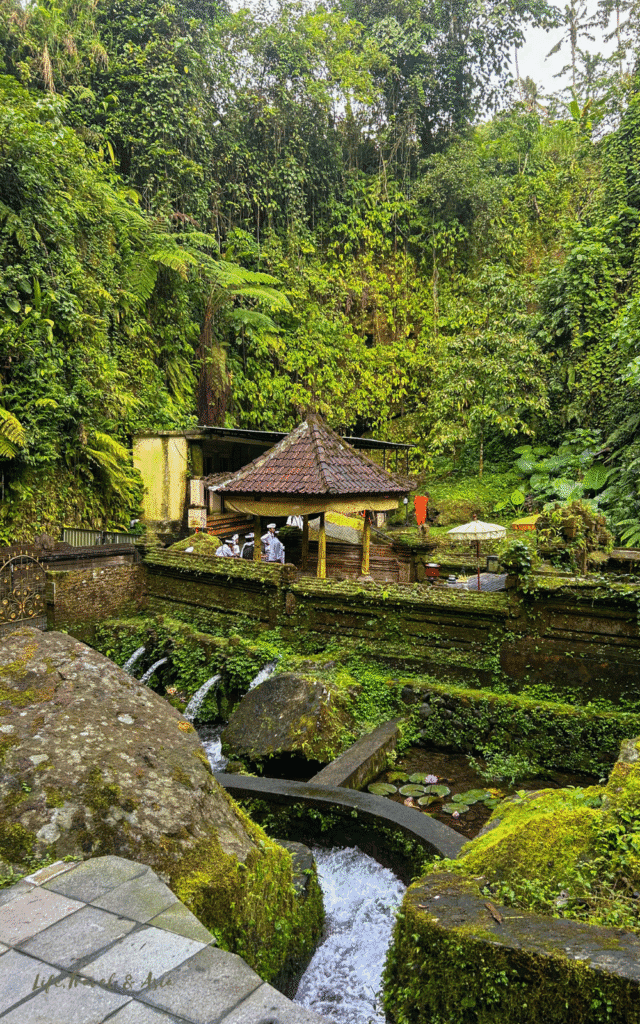
Plus, it’s easy to combine this stop with other nearby sights. Besides the Tegallalang rice terraces nearby, you’ll find several temples that fit perfectly into your day’s itinerary:
Pura Tirta Empul (15 minutes): Not to practice the Melukat ritual, Tirta Empul is way too chaotic for that, but to explore the temple grounds. The temple itself is stunning and worth a visit. After visiting its noisy grounds, you’ll appreciate Gunung Kawi Sebatu even more.
Pura Mengening (3 minutes from Tirta Empul): This is the temple where I practiced my purification ceremony and couldn’t be more adapted. The temple is tiny, but its natural beauty is what makes it truly special. Here, you won’t find crowds of visitors, another reason why you should explore it.
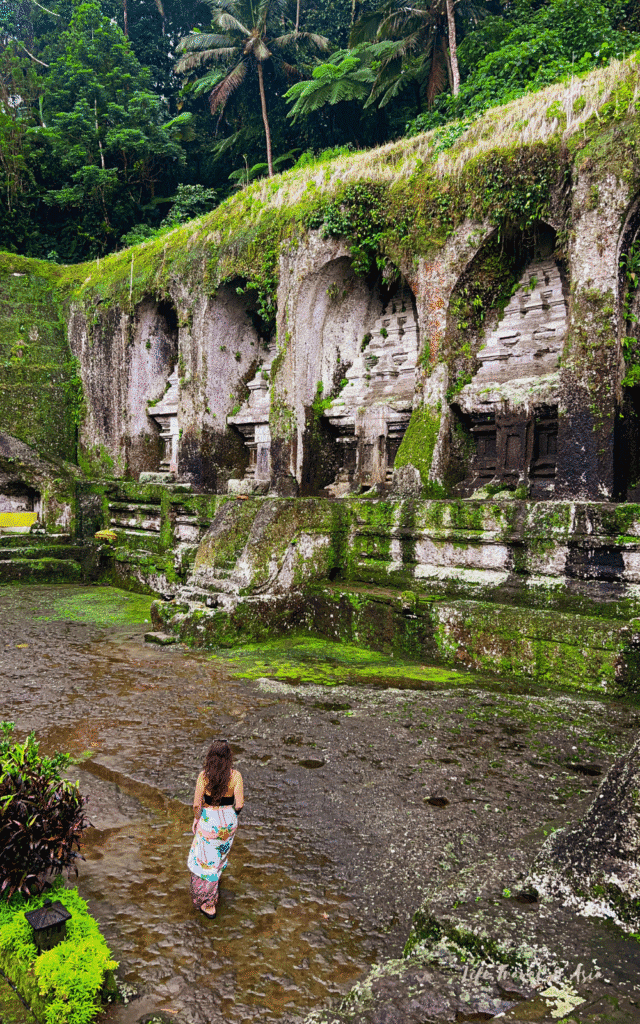
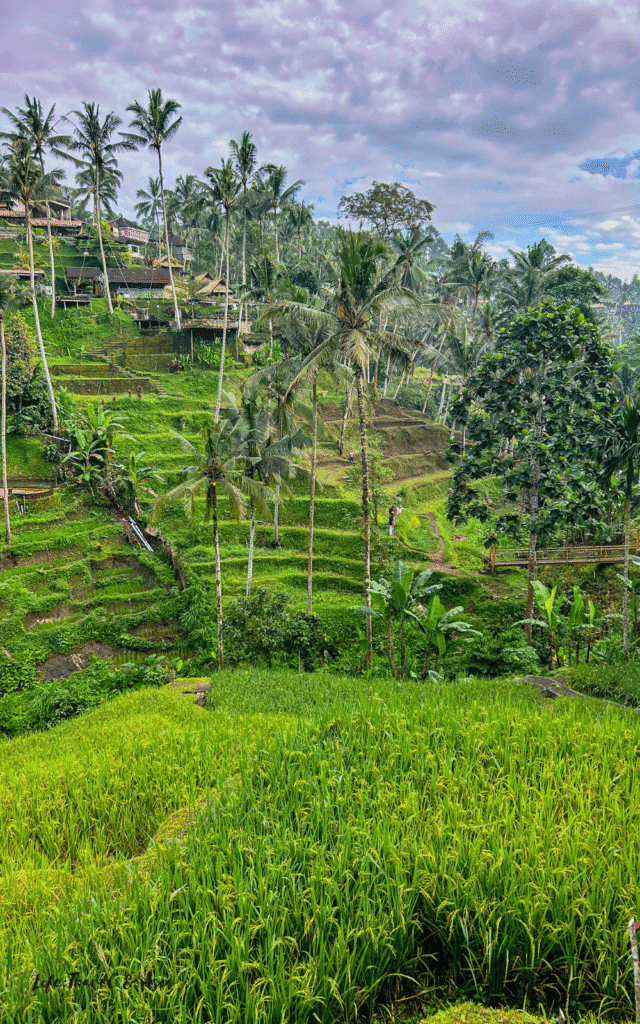
Gunung Kawi Temple (11 minutes): Gunung Kawi is likely one of Bali’s most mystical sacred sites, and it deserves a spot on your itinerary, mainly for its majestic candis carved into the cliffside, rather than the temple courtyards themselves. Just make sure to visit early in the morning, because unlike Gunung Kawi Sebatu, this is no hidden gem.
Tegallalang Rice Terraces (20 minutes): If you’re coming from Ubud, the Tegallalang rice terraces make for a perfect intermediate stop to break up the temple-hopping day-trip with a good dose of nature.
There you go! Hopefully, the pictures in this blog post give you at least a little idea of how beautiful this place truly is.
And you know what’s funny? I wasn’t even planning to visit this temple. When I looked it up online, I ended up looking at pictures of the other Gunung Kawi Temple in Tampaksiring.
When I booked the Grab, I just picked the first location that came up… and only when I arrived did I realize it wasn’t the same. But sometimes that’s precisely how the best places show up — by surprise. And I couldn’t be more grateful, because this is one of those places that will stay with me.
And if you’re planning your Bali itinerary and looking for more meaningful travel experiences, hidden temples, and little breakthroughs and personal growth moments from my slow travel life around Asia, don’t forget to subscribe to the newsletter below.
Join the Journey
Did you find it helpful? 📌 Save it on Pinterest!


